Subfamily Morphinae Scientific name Morpho Order Butterflies and moths | Higher classification Morphini Rank Genus | |
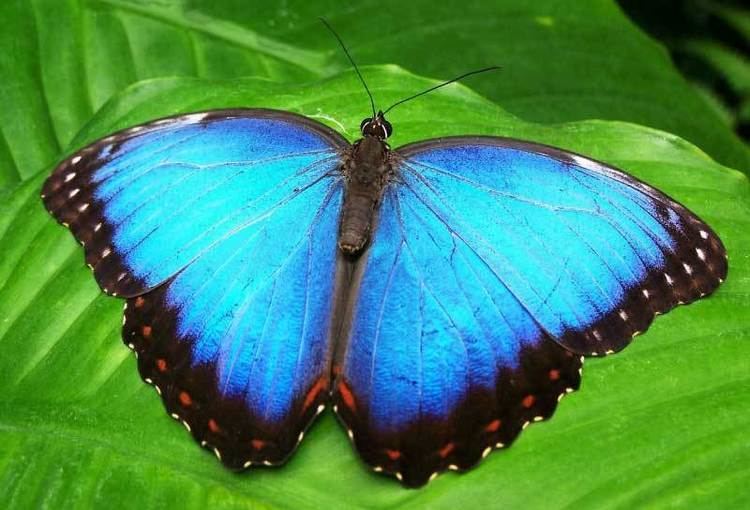 | ||
Lower classifications Morpho menelaus, Morpho peleides, Morpho rhetenor, Morpho helenor, Morpho cypris | ||
What gives the morpho butterfly its magnificent blue deep look
The morpho butterflies are over 29 accepted species and 147 accepted subspecies of butterflies in the genus Morpho. They are Neotropical butterflies found mostly in South America, Mexico, and Central America. Morphos range in wingspan from the 7.5-cm (3-in) M. rhodopteron to the imposing 20-cm (8-in) sunset morpho, M. hecuba. The name morpho, meaning changed or modified, is also an epithet of Aphrodite and Venus.
Contents
- What gives the morpho butterfly its magnificent blue deep look
- Morpho butterflies 2010 lanhm insect fair v08175
- Species
- Taxonomy and nomenclature
- Etymology
- Coloration
- Sexual dimorphism
- Habitat
- Biology
- Behavior
- Lifecycle
- Host plants
- Collectors
- References
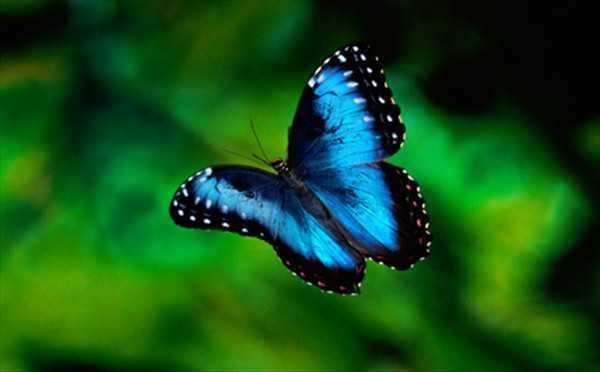
Morpho butterflies 2010 lanhm insect fair v08175
Species
This list is arranged alphabetically within species groups.
Subgenus Iphimedeia
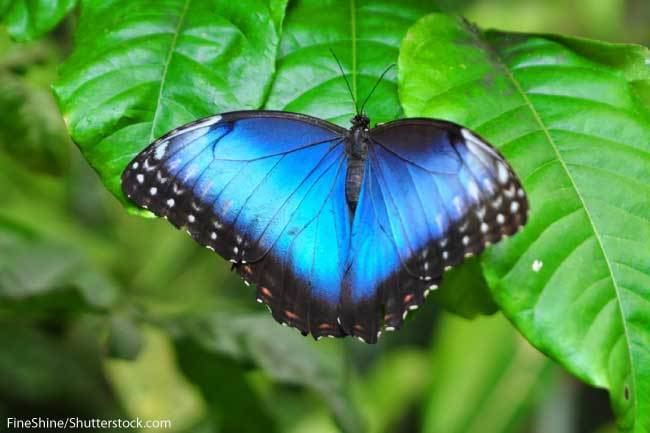
Subgenus Iphixibia
Subgenus Cytheritis
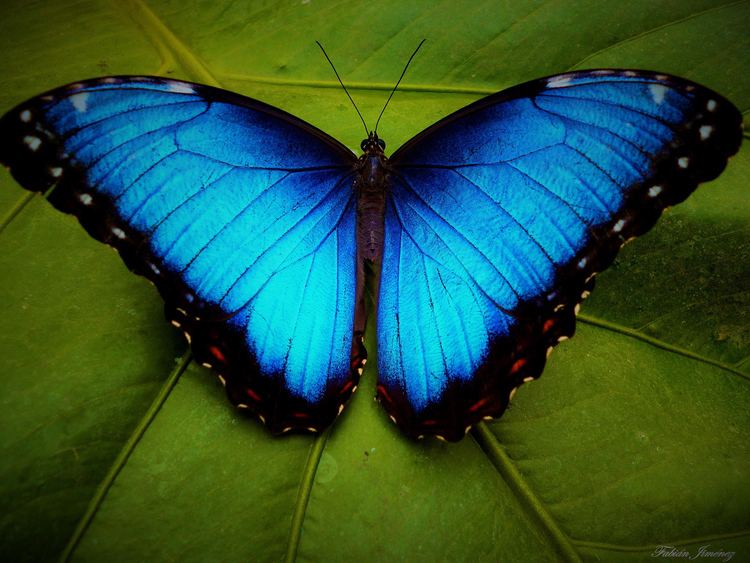
Subgenus Balachowskyna
Subgenus Cypritis
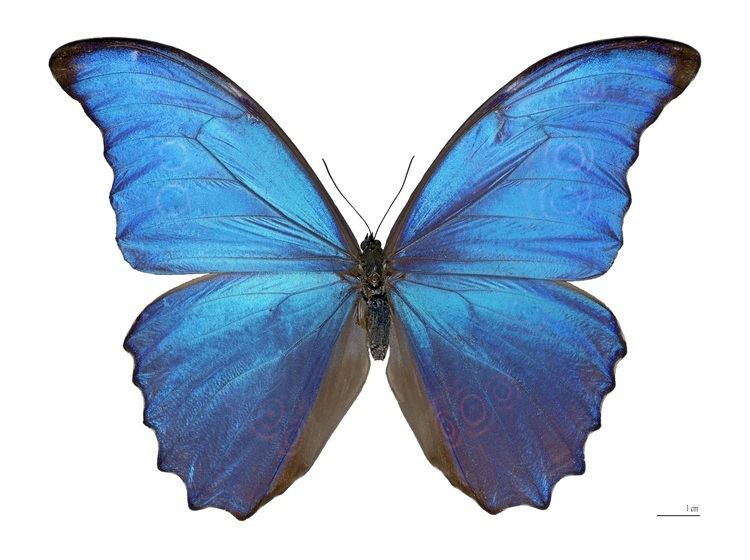
Subgenus Pessonia

Subgenus Crasseia
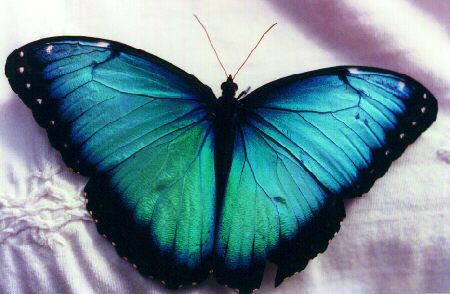
Subgenus Morpho
Ungrouped:
Taxonomy and nomenclature
Many names attach to the genus Morpho. The genus has also been divided into subgenera. Hundreds of form, variety, and aberration names are used among Morpho species and subspecies. One lepidopterist includes all such species within a single genus, and synonymized many names in a limited number of species. Two other lepidopterists use a phylogenetic analysis with different nomenclature. Other authorities accept many more species.
Etymology
The genus name Morpho comes from an Ancient Greek epithet μορφώ, roughly "the shapely one", for Aphrodite, goddess of love and beauty.
Coloration
Many morpho butterflies are colored in metallic, shimmering shades of blues and greens. These colors are not a result of pigmentation, but are an example of iridescence through structural coloration. Specifically, the microscopic scales covering the morpho's wings reflect incident light repeatedly at successive layers, leading to interference effects that depend on both wavelength and angle of incidence/observance. Thus, the colors appear to vary with viewing angle, but they are actually surprisingly uniform, perhaps due to the tetrahedral (diamond-like) structural arrangement of the scales or diffraction from overlying cell layers. The wide-angle blue reflection property can be explained by exploring the nanostructures in the scales of the morpho butterfly wings. These optically active structures integrate three design principles leading to the wide-angle reflection: alternative lamellae layers, Christmas tree-like shape, and zigzag pattern of the ridges. The reflection spectrum is found to be broad (about 90 nm) for alternating layers and can be controlled by varying the design pattern. The Christmas tree-like pattern helps to reduce the directionality of the reflectance by creating an impedance matching for blue wavelengths. In addition, the zigzag pattern of ridges destroys the unwanted interference for other wavelengths in wide angle. This structure may be likened to a photonic crystal. The lamellate structure of their wing scales has been studied as a model in the development of biomimetic fabrics, dye-free paints, and anticounterfeit technology used in currency.
The iridescent lamellae are only present on the dorsal sides of their wings, leaving the ventral sides brown.
The ventral side is decorated with ocelli (eyespots). In some species, such as M. godarti, the dorsal lamellae are so thin that ventral ocelli can peek through. While not all morphos have iridescent coloration, they all have ocelli. In most species, only the males are colorful, supporting the theory that the coloration is used for intrasexual communication between males. The lamellae reflect up to 70% of light falling on them, including any ultraviolet. The eyes of morpho butterflies are thought to be highly sensitive to UV light, so the males are able to see each other from great distances. Some South American species are reportedly visible to the human eye up to one kilometer away.
Also, a number of other species exist which are tawny orange or dark brown (for instance M. hecuba and M. telemachus). Some species are white, principal among these being M. catenarius and M. laertes. An unusual species, fundamentally white in coloration, but which exhibits a stunning pearlescent purple and teal iridescence when viewed at certain angles, is the rare M. sulkowskyi. Some Andean species are small and delicate (M. lympharis). Among the metallic blue Morpho species, M. rhetenor stands out as the most iridescent of all, with M. cypris a close second. Indeed, M. cypris is notable in that specimens mounted in entomological collections exhibit color differences across the wings if they are not 'set' perfectly flat.
Celebrated author and lepidopterist Vladimir Nabokov described their appearance as "shimmering light-blue mirrors".
Sexual dimorphism
The blue morpho species exhibit sexual dimorphism. In some species (for instance M.adonis, M. eugenia, M. aega, M. cypris, and M. rhetenor), only the males are iridescent blue; the females are disruptively colored brown and yellow. In other species (for instance M. anaxibia, M. godarti, M. didius, M. amathonte, and M. deidamia), the females are partially iridescent, but less blue than the males.
Habitat
Biology
Behavior
Morphos have a very distinctive, slow, bouncy flight pattern due to the wing area being enormous relative to the body size.
Lifecycle
The entire lifecycle of the morpho butterfly, from egg to death, is about 115 days.
The larvae hatch from pale-green, dewdrop-like eggs. The caterpillars have reddish-brown bodies with bright lime-green or yellow patches on their backs. Its hairs are irritating to human skin, and when disturbed it secretes a fluid that smells like rancid butter from eversible glands on the thorax. The strong odor is a defense against predators. They feed on a variety of plants. The caterpillar molts five times before entering the pupal stage. The bulbous chrysalis is pale green or jade green and emits a repulsive, ultrasonic sound when touched. It is suspended from a stem or leaf of the food plant.
The adults live for about two to three weeks. They feed on the fluids of fermenting fruit, decomposing animals, tree sap, fungi, and nutrient-rich mud. They are poisonous to predators due to toxins they sequestered from plants on which they fed as caterpillars.
The more common blue morphos are reared en masse in commercial breeding programs. The iridescent wings are used in the manufacture of jewelry and as inlay in woodworking. Papered specimens are sold with the abdomen removed to prevent its oily contents from staining the wings. Significant quantities of live specimens are exported as pupae from several Neotropical countries for exhibition in butterfly houses. Unfortunately, due to their irregular flight pattern and size, their wings are frequently damaged when in captivity.
Host plants
Morpho larvae, variously according to species and region, feed on Leguminosae, Gramineae, Canellaceae, Guttiferae, Erythroxylaceae, Myrtaceae, Moraceae, Lauraceae, Sapindaceae, Rhamnaceae, Euphorbiaceae, Musaceae, Palmae, Menispermaceae, Tiliaceae, Bignoniaceae, and Menispermaceae.
According to Penz and DeVries the ancestral diet of larval Satyrinae is Poaceae or other monocots. Many morphos have switched to dicots on several occasions during their evolutionary history, but basal species have retained the monocot diets.
Collectors
Morpho butterflies, often very expensive, have always been prized by extremely wealthy collectors. Famous collections include those of the London jeweler Dru Drury and the Dutch merchant Pieter Teyler van der Hulst, the Paris diplomat Georges Rousseau-Decelle, the financier Walter Rothschild, the Romanov Grand Duke Nicholas Mikhailovich of Russia and the, English and German respectively, businessmen James John Joicey and Curt Eisner. In earlier years, Morphos graced cabinets of curiosities "Kunstkamera" and royal cabinets of natural history notably those of Tsar of Russia Peter the Great, the Austrian empress Maria Theresa and Ulrika Eleonora, Queen of Sweden. More famous is Maria Sibylla Merian, who was not wealthy.
The people along the Rio Negro in Brazil once exploited the territorial habits of the blue morpho (M. menelaus) by luring them into clearings with bright blue decoys. The collected butterfly wings were used as embellishment for ceremonial masks. Adult morpho butterflies feed on the juices of fermenting fruit with which they may also be lured. The butterflies wobble in flight and are easy to catch.
